After two weeks, we’ve completed reef assessments around Rangiroa, Aratika, and Raraka and are now examining Fakarava. Tuamotu reefs are dramatically different from Society Islands. Besides the near absence of crown of thorns seastars (we’ve seen a handful in the lagoon), there is much more living coral, a higher diversity of coral species, and more diverse and abundant fish communities.
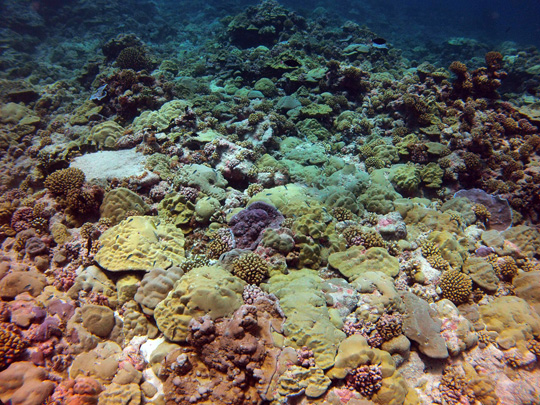
Coral Species of Tuamotu Reefs
On the fore reef, dense assemblages of branching corals begin near the shore and extend down the slope to 5-10 m, becoming mixed and gradually dominated by larger boulder and plating corals at 10-20 m depth, followed by shingles of pore corals (Porites) and overlapping sheets of plating pore corals and lettuce corals (Porites & Pachyseris) on the fore reef slope, from 20-30 m and deeper.
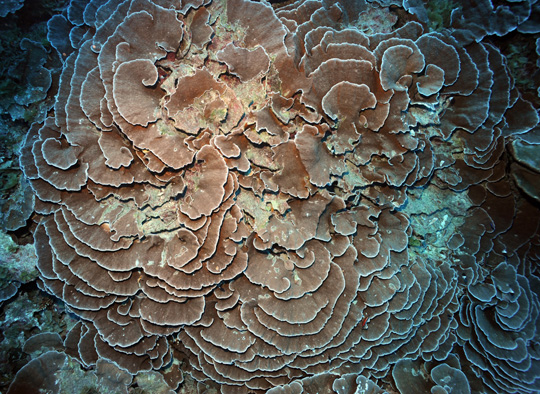
These outer reefs vary considerably in species composition, with windward reefs having a mix of stout, bushy and tree-like corals (Acropora), branching cauliflower coral (Pocillopora), finger corals (Porites) and small massive faviid corals, and leeward reefs being dominated by Porites, plates of rice coral (Montipora), small boulders of star coral (Favia), and columns of Pavona coral.

The amount of coral varies at each site of the Tuamotu reefs, with some completely covered in coral, some having fewer corals and a lot of fleshy algae, especially carpets of feather-like and grape-like green algae (Caulerpa) and mats of lettuce algae (Microdictyon), and some with large accumulations of rubble between patches of living coral.
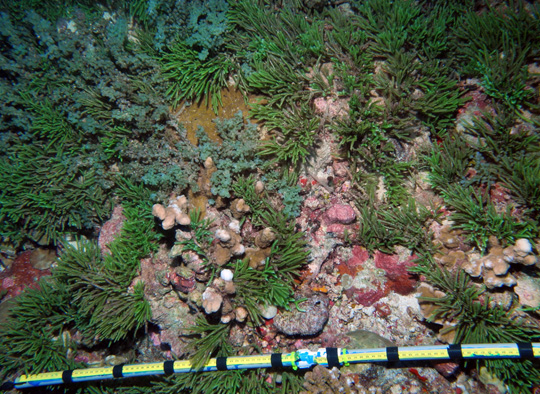
Lagoonal reefs are built on a framework of massive boulders of Porites. Sites close to the cut (the channel connecting the fore reef to the lagoon) had a lot of live coral – unusually large helmet or dome-shaped colonies Porites (some over 5 meters across), and a mix of branching, plating, encrusting and foliose corals. Sites with less water exchange (e.g. closer to the center of the lagoon) often were covered in fleshy algae and had little coral, except near the water’s surface.
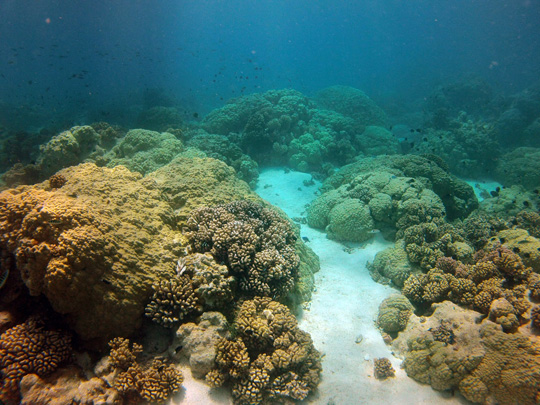
Unraveling the cause of these differences is one part of the puzzle of the Tuamotu reefs. We know that the same species of coral can look completely different on two reefs, changing shape depending on depth, amount of light, wave exposure and other environmental and biological factors.
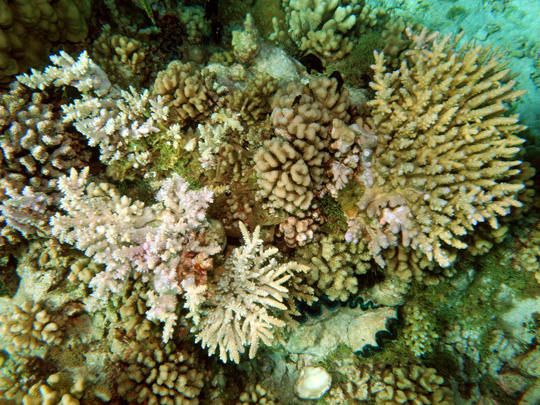
For instance, we often see massive, mountainous boulders of Porites in sheltered shallow areas and these same species form plates or overlapping shingles in deeper water to maximize the amount of their surface exposed to sunlight. On windward reefs, branching corals often had thick bases, short digitate or tree-like branches and colonies spread out laterally, close to the bottom, with branches facing into the current to minimize chances of breakage. These stout, bushy corals exist in areas of high wave exposure because they spread through fragmentation, with broken branches settling on the bottom, reattaching and regrowing into a new colony. In protected waters of the lagoon, branching species were more fragile, forming bottlebrush colonies, tangles of thin, erect branches, and bushes.
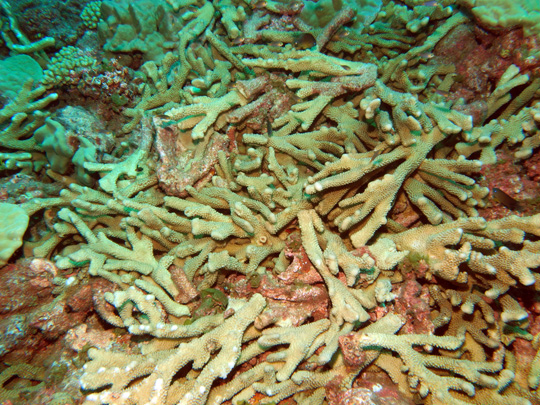
Determining why some reefs are healthier than others is another part of the puzzle. Even though coral cover is much higher here in the Tuamotu reefs, there are many more larger, older corals than we had observed in Society Islands, human populations are much smaller here, and certain species have been found with disease much more frequently. We typically find a number of dead cauliflower corals (Pocillopora), in growth position, which we also saw in Society Islands, but these were primarily corals that had been eaten by crown of thorns starfish (COTS). In the Tuamotu reefs, we’ve found very few recently dead corals that were eaten by COTS, but a high percentage (up to 10%) have recently dead (white) patches. This is presumably a disease called white syndrome, but we know very little about its cause.
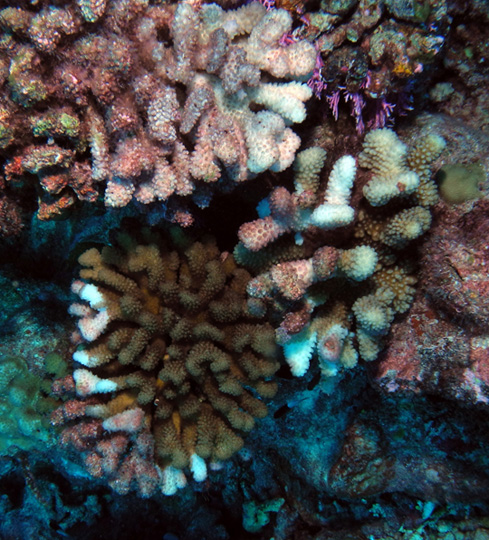
During each survey, I measure the size of all corals (healthy and diseased), and record how much of the coral is live, long dead (covered in algae), recently dead (white), and, when possible, identify why they have died. We’ve also sampled some of the diseased corals to better understand the effects of the disease, in hopes of identifying a cause.
At least for now, the disease does not appear to be having a major impact on these Tuamotu reefs. As these species are a dominant corals on the fore reefs of Tuamotu, they exhibit very high rates of replacement, and they are considerably larger in size than what we saw in Society Islands.
(Photos by: Dr. Andy Bruckner)